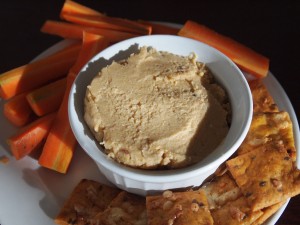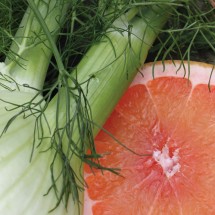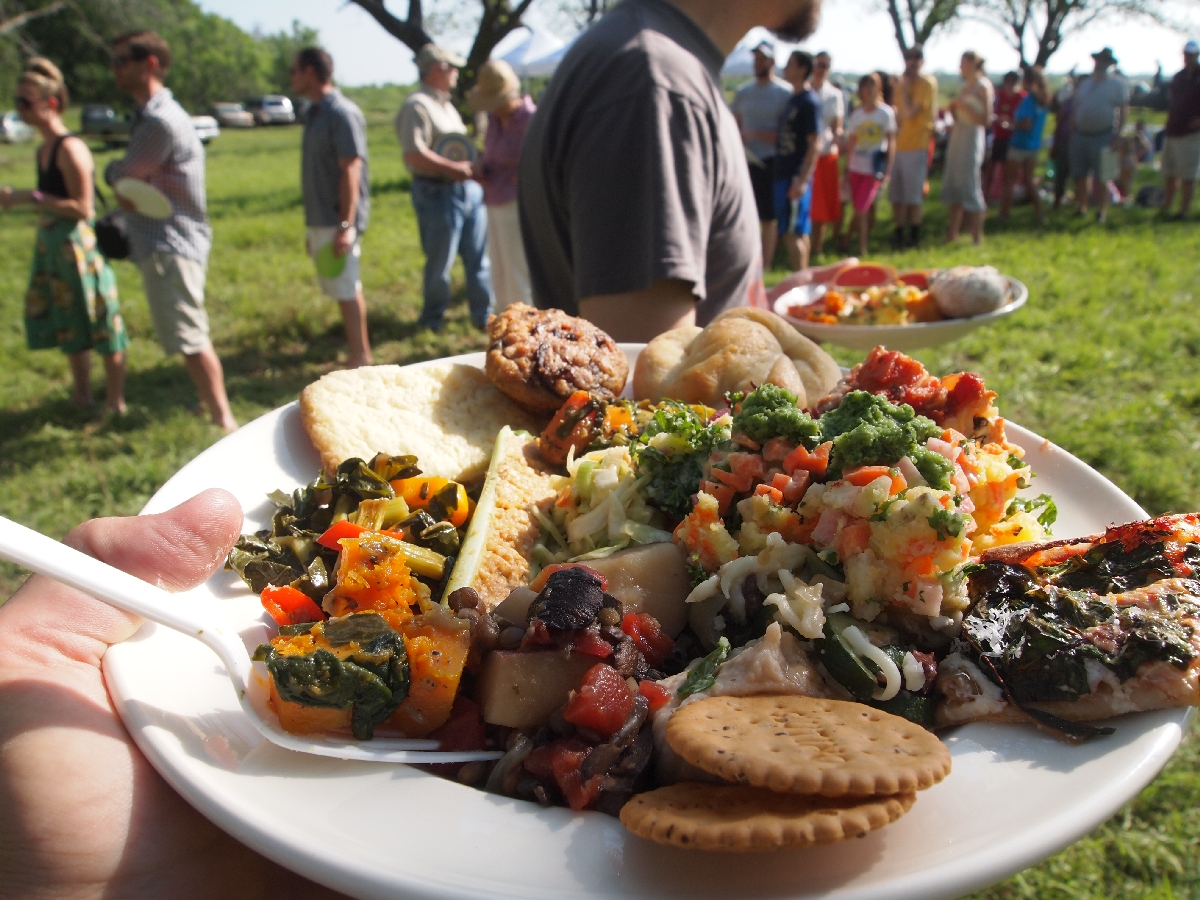
Megamega Hummus with carrots and Dr. Krackers
The Anti-Inflammatory Diet is likely to gain popularity in the near future. The diet, which emphasizes consuming whole grains, fruits, vegetables, and healthy fats to reduce chronic inflammation and promote health, is, for the most part, easily adapted to a vegetarian diet. However, the diet recommends a high-level of Omega-3 fatty acid consumption including 2-6 servings of fish and seafood a week. For most vegetarians this is untenable as is the recommendation to take a 2-3 gram fish oil supplement. The reason that fish and fish oil are preferred to plant-based Omega-3 sources is that the fish contains two important Omega-3s, EPA and DHA, while plant-based Omega-3 sources only contain ALA fatty acids. The human body can, rather inefficiently, convert ALA to the necessary EPA and DHA. So, in order to consume all of the necessary ALA for this conversion a vegetarian requires about 5 times the Omega-3 consumption that someone else will obtain from fish or fish oil – at least 6 grams of ALA a day.
Even with all of this information I still can not bring myself to eat a fish oil capsule knowing as I do that the undesirable fishy taste will be in my mouth for at least three hours. The only remaining solution is to eat all the plant-based sources of ALA Omega-3 fatty acids I can get my hands on. This includes most nuts, seeds, and the remarkable herb purslane (more on that later this spring).
While we have not had this recipe tested for nutritional content, based on the ingredients we estimate that one 1/2 cup serving of this hummus has 246 calories, 4.30 grams of protein, 6.18 g Omega-6 fatty acids, and 3.35 g Omega-3 fatty acids. With that nutritional profile you may want to put this one in your regular snack rotation like we do.
Ingredients
- 1 cup dry chickpeas (aka garbanzo beans or chana) or 1 16-ounce can
- 1/4 cup water
- 1 lemon, juiced
- 1 tablespoon peanut butter
- 2 cloves garlic, peeled
- 2 tablespoons linseed oil
- 1 teaspoon ground cumin
- 1/2 cup raw unsalted sunflower seeds
- 2 tablespoons whole flaxseed
- Salt and pepper to taste
Procedure
- If you are starting with dry chickpeas cook them using this simple method: Simmer the beans covered in 2 inches of water for about 10 minutes. Turn off heat and allow the beans to soak for an hour. Drain the water and rinse the beans. return the beans to the pot with enough water to cover about 2 inches deep and bring to a boil. Lower heat and simmer covered until tender, about an hour. When the beans have reached the desired level of tenderness, drain and rinse with cold water for about a minute to cool.
- In a food processor, combine chickpeas, water, lemon juice, garlic, linseed oil, cumin, and sunflower seeds. Blend until smooth adding additional water a teaspoon at a time if necessary.
- Stir in flaxseeds and salt and pepper to taste.
- Serve with raw vegetables or your favorite crackers. Hummus is also great on sandwiches.









